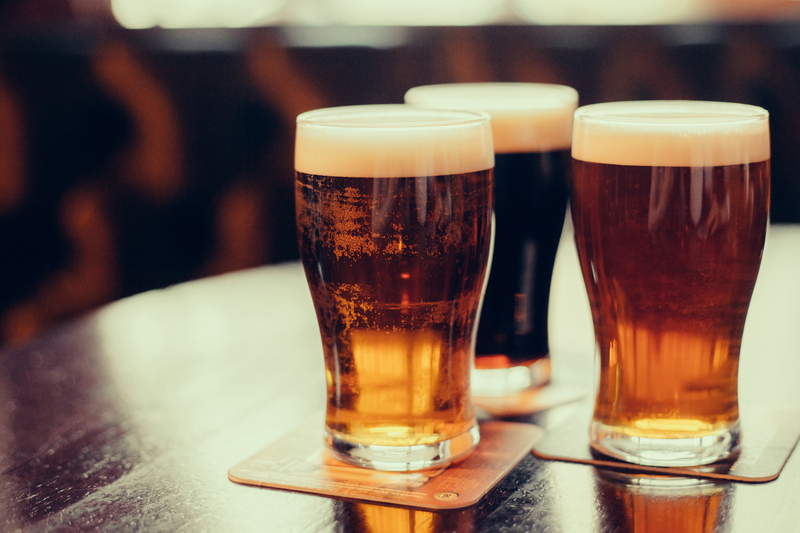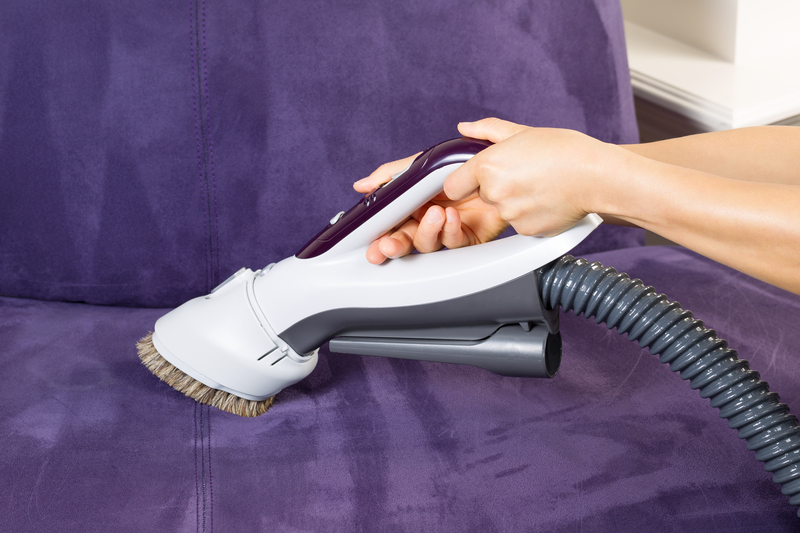Unlocking Luster: The Path to Clean Jewelry
Posted on 07/09/2025
Unlocking Luster: The Path to Clean Jewelry
Jewelry has always held a special place in human culture, admired for its beauty, symbolism, and sentimental value. However, over time, dirt, oil, and daily wear can rob even the finest pieces of their natural shine. Unlocking the luster of your jewelry requires more than just an occasional rinse--it demands knowledge, care, and the right techniques. In this comprehensive guide, we'll uncover effective methods and essential tips for achieving and maintaining dazzling, clean jewelry at home.
Why Clean Jewelry Matters: More Than Just Looks
Your jewelry isn't just a luxurious accessory; it's an investment and a treasured memory. Regular jewelry cleaning helps to:
- Restore Shine: Dirt and oil accumulate, dulling shine and brilliance.
- Prevent Damage: Grime and residue can lead to scratches or weakened prongs.
- Maintain Hygiene: Rings and earrings can harbor bacteria, especially if worn daily.
- Maximize Value: Well-maintained pieces retain their beauty and monetary worth.
Unlocking the luster of your favorite pieces not only enhances their appeal but also ensures longevity.

Understanding Your Jewelry: Material Matters
Before embarking on any jewelry cleaning journey, it's crucial to identify what your piece is made of. Different materials require distinct care:
Precious Metals
- Gold Jewelry: Resistant to tarnish but susceptible to scratches; use mild solutions.
- Silver Jewelry: Prone to tarnishing; requires specific anti-tarnish cleaners or cloths.
- Platinum: Tough but can develop a patina; gentle cleaning recommended.
Gemstones and Diamonds
- Diamonds: Tough but can lose brilliance with residue.
- Sapphires, Rubies: Durable but avoid acidic chemicals.
- Pearls and Opals: Porous and delicate; only mild, non-abrasive cleaners.
Tip: When in doubt, consult your jeweler or check for manufacturer instructions before cleaning.
Common Causes of Dull Jewelry
Even the most brilliant pieces can lose their sparkle. Knowing what causes your jewelry to appear grimy or tarnished can help you prevent damage:
- Body Oils and Lotions: These substances stick to jewelry and attract dust.
- Cosmetics: Perfume, makeup, and hairspray can leave residues.
- Everyday Activities: Gardening, cooking, or cleaning exposes jewelry to grime.
- Exposure to Elements: Saltwater, chlorine, and air pollution accelerate tarnish and corrosion.
Identifying these factors is the first step toward achieving consistently clean and shiny jewelry.
DIY Jewelry Cleaning: Home Methods That Work
Professional cleaning services are invaluable, but with the right tools and guidance, you can unlock the luster of your jewelry at home. Here are tried-and-true methods for various jewelry types:
1. Warm Water and Mild Soap
- Fill a bowl with warm water and add a few drops of mild dish soap.
- Soak your jewelry for 15-20 minutes.
- Gently scrub with a soft toothbrush, paying attention to crevices.
- Rinse under lukewarm water and pat dry with a soft, lint-free cloth.
Best for: Most gold, silver, diamonds, sapphires, and rubies.
2. Baking Soda Paste
- Make a paste with baking soda and a few drops of water.
- Apply the paste gently with a soft cloth or brush.
- Rinse thoroughly and buff with a clean cloth.
Best for: Tarnished silver jewelry (not recommended for pieces with soft gemstones or intricate filigree).
3. Ammonia Solution (Use with Care!)
- Mix one part ammonia with six parts water.
- Soak jewelry for no more than one minute.
- Remove immediately, rinse, and dry thoroughly.
Best for: Diamonds and hard gemstones. Not safe for pearls or porous gems.
4. Vinegar Soak
- Soak tarnished silver in white vinegar for 10-15 minutes.
- Use a soft brush if necessary, then rinse and dry.
Best for: Pure silver jewelry; avoid on gemstones and plated pieces.
5. Ultra-Sonic Cleaners
- These devices use sound waves to lift dirt from crevices.
- Follow manufacturer instructions and avoid use with fragile stones or antique pieces.
Unlocking brilliance is simple, but always check the compatibility of methods with your specific jewelry.
Caring for Specific Types of Jewelry
Gold Jewelry
- Use only gentle soap and water; avoid chlorine, which can discolor gold.
- Store pieces separately to avoid scratches.
- Polish occasionally with a soft jewelry cloth to keep gold jewelry looking clean and lustrous.
Silver Jewelry
- Store in anti-tarnish pouches or cloths.
- Buff routinely with a silver cleaning cloth to prevent tarnish build-up.
- Avoid exposure to rubber and household cleaning chemicals.
Pearl Jewelry
- Wipe with a soft, damp cloth after each wear.
- Avoid soaking; pearls are porous and can be damaged by liquids.
- Store flat in a separate pouch to prevent scratching.
Diamond Jewelry
- Clean regularly using a soft toothbrush and mild soap.
- Inspect prongs and settings often to keep stones secure.
- Remove before heavy manual work to prevent damage.
Common Mistakes to Avoid in Jewelry Cleaning
- Using harsh chemicals: Chlorine, bleach, and acetone can damage metals and stones.
- Ultrasonic overuse: Not suitable for treated gemstones or antique/vintage jewelry.
- Ignoring settings: Dirt builds up under prongs and stones; be thorough, but gentle.
- Paper towels for drying: They can scratch metal; use only lint-free cloths or microfiber.
- Storing jewelry together: Can cause scratches and tangling. Store individually.
Unlocking Luster: Jewelry Cleaning Kits & Professional Help
Home Cleaning Kits
There are many commercial kits designed to clean jewelry of different types. When choosing:
- Look for kits tailored to your jewelry's specific materials.
- Avoid abrasive pads for delicate finishes.
- Always follow instructions and perform a spot test if unsure.
When to Seek Professional Jewelry Cleaning
Sometimes, expert intervention is best, especially if:
- Your piece contains multiple types of stones or delicate enamel work.
- There is heavy tarnish or stubborn residue you can't remove at home.
- The jewelry is antique, vintage, or has great sentimental value.
- You notice loose stones or damaged settings.
Professional cleaning uses specialized equipment and expertise to restore pieces safely and thoroughly.
Jewelry Cleaning Myths: Separating Fact from Fiction
- Lemon juice cleans all jewelry: Acidic solutions can damage gemstones and cause discoloration.
- Toothpaste is a good jewelry cleaner: Abrasive and can scratch metals and stones.
- Boiling jewelry is safe: Sudden temperature changes can break or loosen stones, especially in antique jewelry.
- Cleaning too often causes wear: If using proper methods, regular cleaning preserves jewelry.
Daily Habits to Keep Jewelry Clean Longer
Unlocking the secret to consistently sparkling jewelry lies in your daily routine. These simple habits make a big difference:
- Remove jewelry before swimming, showering, or applying lotions and perfumes.
- Wipe pieces down after each wear with a soft cloth to remove oils and sweat.
- Store in cool, dry places--separate pieces to avoid scratches.
- Perform visual inspections for signs of damage or looseness--catch issues early.
Travel Tips for Clean Jewelry
- Carry jewelry in soft pouches or organizers with separate compartments.
- Consider leaving irreplaceable pieces at home when traveling.
- Clean jewelry before packing to avoid setting in stains or residues during the trip.
Building a Long-Term Jewelry Maintenance Routine
Unlocking luster isn't a one-time affair. Developing a maintenance schedule ensures your treasures always look their best:
- Weekly: Light cleaning of frequently worn jewelry.
- Monthly: Deeper clean and check settings or clasps for damage.
- Annually: Have valuable pieces checked and professionally cleaned by a jeweler.
Eco-Friendly and Safe Jewelry Cleaning Options
Are you looking for ways to clean jewelry without harsh chemicals? Eco-friendly methods are gentle and effective:
- Use baking soda and vinegar sparingly for silver.
- Olive oil and lemon juice mix (very diluted) for gentle polishing of gold--test durability first.
- Simple soap and water remains one of the safest cleaning solutions for most jewelry types.
Pro Tip: Avoid overuse of vinegar or lemon on glue-mounted stones, as these can loosen adhesives.

FAQs: Unlock the Secrets to Sparkling, Clean Jewelry
How often should I clean my jewelry?
Routine cleaning every two weeks is ideal for regularly worn pieces. However, more delicate or rarely worn items can be cleaned every couple of months.
What's the safest homemade cleaning solution?
Warm water mixed with mild dish soap is universally safe for most metals and non-porous gemstones.
Is it safe to use toothpaste or baking soda on jewelry?
Baking soda can help with tough tarnish on silver jewelry, but avoid using toothpaste as it's often too abrasive for soft metals and stones.
Why does my silver jewelry tarnish so quickly?
Exposure to air, moisture, and chemicals accelerates tarnish. Store silver pieces in anti-tarnish bags and clean periodically to maintain their luster.
Should I remove my rings before washing my hands?
Yes, especially when using harsh soaps or hot water, as this can dull stones or leave residue under the settings.
Conclusion: Unlocking the Everlasting Shine
Your jewelry deserves the care and attention that ensures it remains as resplendent as the day you first wore it. By understanding the right methods and making them a habit, unlocking luster becomes part of your routine. Whether you use safe at-home techniques, specialized kits, or professional services, the path to clean, sparkling jewelry is clear and achievable.
Are you ready to see your favorite ring, necklace, or bracelet dazzle once more? Follow these expert guidelines, and enjoy watching your cherished pieces shine for generations.
Remember: Consistency, gentle care, and the right knowledge will truly unlock the lasting luster of your jewelry collection!




